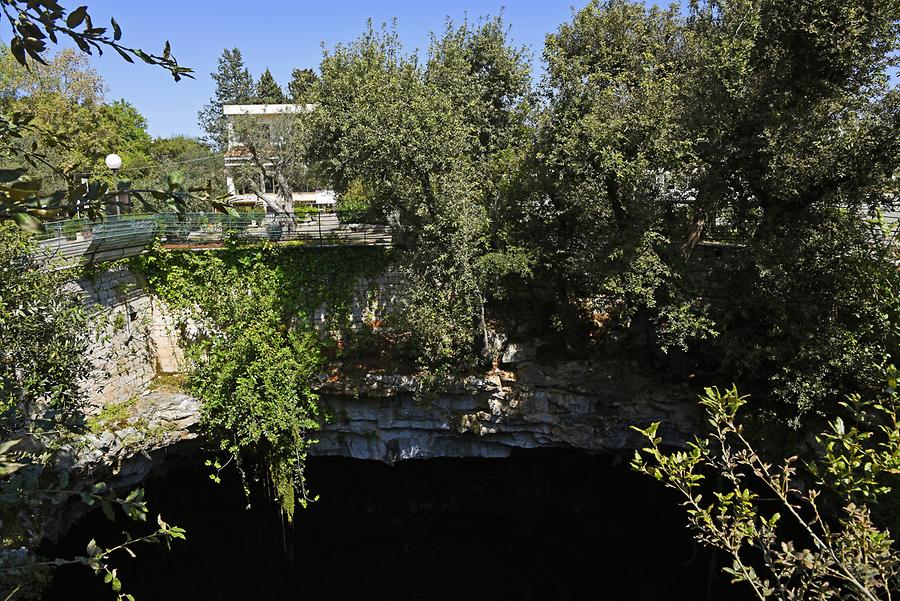Castellana Caves#

Castellana Caves, April 2017, © Gerhard Huber, under CC BY-NC 4.0 +Edu
Auf dem Weg in den Küstenort Polignano
Polignano , Italy
lockt ein Ausflug in die Unterwelt Apuliens. Die Grotta di Castellana, Italiens größte Karsthöhle, gehört zu einem weitverzweigen unterirdischen System, das bislang nur zum Teil erforscht ist. Der Eingang, ein Loch in der Erde mit einer riesigen Höhle darunter, galt den Einheimischen als 'Tor zur Hölle'. Jahrhundertelang nutzten es die Bauern zur Entsorgung von Müll und Tierkadavern. Als man 1938 begann, das Höhlensystem zu erforschen, musste man zuerst eine 10 m dicke Schicht aus Abfällen entsorgen. Ein Karsthöhlen-System entsteht, wenn unterirdische Flüsse den weichen Kalkstein auswaschen und große Hohlräume zurücklassen. Ständig dringt weiteres Regenwasser ein und bleibt in Tropfenform an der Höhlendecke hängen. Dadurch setzt sich das im Wasser gelöste Kohlendioxid als Calcit, sogenannter Sinter ab und bildet von der Decke herabhängende Stalagtiten und vom Boden aufragende Stalagmiten. Sie wachsen nur 1-2 cm pro Jahrhundert. Eisenoxide, Humussäuren und Mangan hüllen die Tropfsteine in ein effektvolles Farbenkleid. Berühren sollte man die filigranen Kunstwerke nicht, denn das Fett der Haut verhindert eine weitere Ablagerung von Calcit. In der Höhle herrscht Winter wie Sommer eine konstante Temperatur von 15 Grad und eine Luftfeuchtigkeit von nahezu 100 Prozent.
On the way to the seaside village of Polignano
Polignano , Italy
a trip to the underworld of Apulia tempts the traveller. The Grotta di Castellana, Italy's largest karst cave, is part of a vast subterranean system that has only been partially explored so far. The entrance, a hole in the ground with a huge cave underneath, was considered the 'gate to hell' by the locals. For centuries, farmers used it to dispose of garbage and animal carcasses. When the cave system was first explored in 1938, it was necessary to dispose of a 10-meter-thick layer of waste at first. A karst cave system is made when underground rivers wash out the soft limestone leaving large cavities behind. Continuously, the rainwater infiltrates and remains hanging down in drops from the cave ceiling. As a result, the carbon dioxide dissolved in the water precipitates as calcite, the so-called sinter, forming stalactites hanging from the ceiling and stalagmites rising from the ground. They only grow 1-2 cm per century. Iron oxides, humic acids and manganese engulf the stalactites in effective colors. One should not touch these filigree works of art, because the skin fat prevents further limescale deposits. In the cave, there is a constant temperature of 15 degrees and a humidity of almost 100 percent both in summer and in winter.